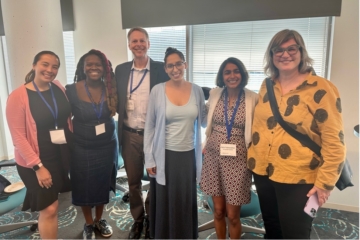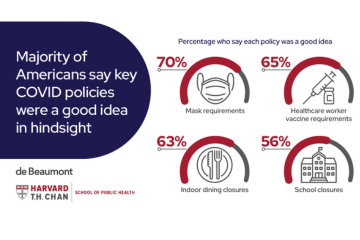
“This study comes at an opportune moment, as an influx of new funding has made this a critical time for policymakers to finally break the boom-or-bust cycle and create a stable, strong U.S. public health system,” said JP Leider, lead author and director of the Center for Public Health Systems at the University of Minnesota School of Public Health. “But so far this is one-time funding, and our public health workforce remains in a dire state. Our research shows that we need reforms and inducements to attract more people — especially people from diverse backgrounds — to build a stronger and more stable workforce that better reflects the community it serves.”
The public health workforce has shrunk substantially since the 1970s, and this decline has further worsened since the Great Recession, which saw a loss of more than 40,000 public health staff positions in state and local government. According to the Staffing Up report, state and local public health departments across the U.S. need to hire at least 80,000 full-time equivalent positions — an 80% increase — to provide minimum public health services.
“Now is the time to invest in our public health workforce, not just through hiring new employees to meet immediate needs, but also retaining experienced employees to provide stability and to maintain and grow health departments’ collective knowledge,” said Brian C. Castrucci, DrPH, president and CEO of de Beaumont.
The new study reviews what’s known about today’s public health workforce, including overall numbers, career pathway development, and recruitment and retention. Key takeaways:
- Recruitment, diversity, and retention are key barriers to building the public health workforce.
- The COVID-19 pandemic has taken a toll on the workforce, with high reported rates of burnout and symptoms of PTSD among public health employees.
- The number of people enrolling in public health degree programs is rising, but few graduates choose government public health employment, opting instead for private sector jobs.
- Tracking the composition and the total number of people in the public health workforce remains a challenge because the federal government lacks a system for cataloging public health staff at the federal, state, and local level.
While acknowledging that public health workforce shortages are likely to persist, the paper identifies strategies that policymakers can adopt to alleviate shortages, including:
- Taking proactive steps to increase the diversity of the workforce
- Offering loan repayment programs for public health graduates
- Making reforms to the government hiring process
- Increasing protections for public health workers
The study was conducted by the University of Minnesota School of Public Health, Indiana University, Fairbanks School of Public Health, Columbia University Mailman School of Public Health, the de Beaumont Foundation, and the Johns Hopkins Bloomberg School of Public Health. For more insights and data related to the public health workforce, explore the results of the Public Health Workforce Interest and Needs Survey (PH WINS).




